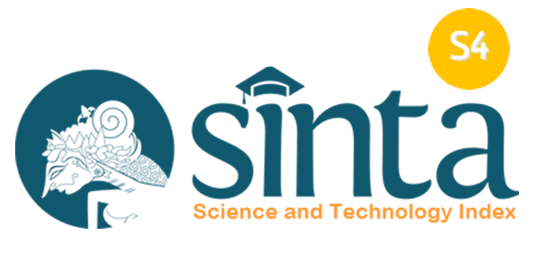Paradigma Pendidikan Inklusif sebagai Upaya Memperluas Akses dan Perbaikan Mutu Pendidikan
Abstract
Terdapat dua tantangan besar yang sedang dihadapi oleh dunia pendidikan saat ini yaitu: (1) periambahan jumlah anak yang tereklusikan (terbaikan) dari partisipasi pendidikan semakin banyak. Diperkirakan ada sekitar 113 juta anak usia sekolah dasar di seluruh dunia termasuk anak disabilitas, tidak memperoleh kesempatan pendidikan dasar (International Consultative Forum onEducation for All, 2000), 90%dari mereka hidup di negara berkang termasuk di Indonesia. Di samping itu anak-anak yang sudah masuk sekolah dasar pun dihadapkan pada masalah drop out sebelum dapat menyelesaikan pendidikan (UNESCO, 2000), (2) Pendidikan -secara spesifik sekolahmasih belum memberi keuntungan kepada semua anak. Artinya kebutuhan belajar anak secara individual belum dapat dipenuhi. Sekolah lebih menekankan pada pencapaian akademik dari pada mengembangkan anak sebagai individu mencapai perkembangan optimal. Untuk mengatasi dua tantangan itu maka secara international terjadi pergeseran paradigma pendidikan dari pendidikan yang berifat konvensional (ekslusif) ke pendidikan yang menjangkau semua anak yang bersifat inklusif. Sehubungan dengan itu, tulisan iniakan mendiskusikan tentang paradigma pendidikan inklusif.
Kata Kunci: Paradigma Pendidikan Inklusifdan akses perbaikan mutu pendidikan
Keywords
Full Text:
PDFReferences
Ainscow, Mel (2002) Understanding the Development of Inclusive Schools. Falmer Press: London
Allan, J (2005) Actively Seeking Inclusion Pupil with Special Needs in Mainstreams Schools. Falmer Press:London
Alimin, Z(2004) Reorientasi Pemahaman Konsep Pendidikan Khusus Ke Pendidikan Kebutuhan Khusus dan Implikasinya terhadap Layanan Pendidikan. Jurnal Asesmen dan Intervensi Anak Berkebutuhan Khusus. Vol.3 No 1 (52-63)
Bisshop.D.V,M. (1996). Cognotive Neurospychology and developmental disorders: Uncomfortable bedffelows. Quarterly Journal of Experimental Psycholoev 50,899-923
Bower,T,G.R, (1979). Toward a unitary theory of development. In E.B. Thomas (ed), Original of the Infant's Social Responsiveness, Hillsdale, New Jersey : Erlbaum.
Burlingham,D. (1979). To be blind in a sighted word, Psychoanalytic Studv of The Child, 34,5-30
Delendo,J. Hugher& Dote-Kwan,J. (1998). A close look at the cognitive play of pre schoolers with viisual impairments in the home. Exceptional Children 64 451-462
Dunlea,A. (1989), Vision and the emergence of meaning. Cambridge: Cambridge University Press
Foreman, Phil (2002), Integration and Inclusion In Action. Mc Person Printing Group: Australia
Fraiberg,S. (1997), Insights from the Blind. London: souvenir Press
Johsen, Berit and Skjorten D. Miriam, (2001) Education, Special Needs Education an Intoduction. UnifubPorlag: Oslo
Landau,B (1999). Knowledge and it expression in the blind child. In D.P. Keating & H. Rosen, Constructivist Perspective on developmental Psychopatology and a typical Development; London Erarbaum
Lewis, Vicky (2003), Development and Disability. Blckwell Publishing Company: Padstow, Cornwall.
Lowenfeld, B, (1948). Effects of blindness of the cognitive functions ofchildren Newvous Child,7,45-54
Millar,S. (1997). Reading without Vision, In V Lewis & G. Collis, Blindness and Psychological Development in Young Children, Leicerter BPS Books
Pring, L. (1988). The "reverse-generation" effect: A comparison of memory performance between blind and sighted children. British Journal of Psychology.
Pring,L, & Mulkeren. (1992). Memory in blind and sighted children, Eroupean review of Appliede Psychology, 42,243-248
Presisler, G.M. (1997), Social and emotional development of blind children: A Longitudinal Study , in V., Lewis &G. Collis, Blindness and Psychological Development in Young Children. Liecester : BPS Books.
Roger,S. J., & Puchalski, C.B. (1986). Social smiles ofvisual impaired infants, Journal of Visual Impairment and Blindness
Schellingerhout, R., Smitsman,A.W,. van Gale, G.P. (1997). Exploration of surfacefexture in conginentally blind infants, Child: care, health and Development 23,247-264
Schneekloth, L.H. (1989). Play environment for visually impaired children, Journal of visual Impairment and Blindness, 83, 196-201
Stubbs, Sue (2002) Inclusive Education: Where there are few resources. The Atlas Alliance: Gronland, Oslo.
Troster, H., & Brambring, M. (1992). Early social-emotional development in blind infants, Child: Care, Health and Development, 18,207-227
Workmen, S.H. (1986). Teacher "Verbalizations and the social interaction of blind preschooler. Journal of Visual Impairment and Blindness, 80.532-534
DOI: https://doi.org/10.17509/jassi.v13i2.4063
Refbacks
- There are currently no refbacks.
Copyright (c) 2016 Universitas Pendidikan Indonesia

This work is licensed under a Creative Commons Attribution-ShareAlike 4.0 International License.




